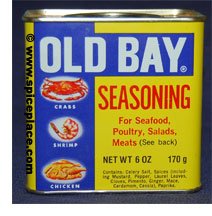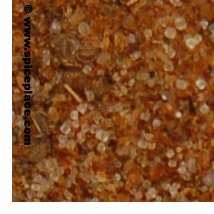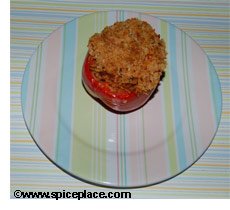We enjoy making breakfast on the weekends. It’s a nice break to take the time to cook in the morning instead of rushing to get to work. And so while we always try to vary our diet and to cook different meals, one we have quite often is the good old Ham and Cheese Omelet. I learned to cook this dish when I was in the service and had to help out in the kitchen. For the most part the work in making a ham and cheese omelet is in the preparation. So here is how we make a ham and cheese omelet for two.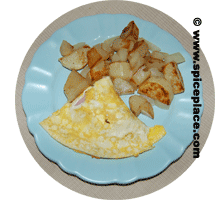
Making a Ham and Cheese Omelet
Start with 3 free range chicken eggs*. Break the eggs by rapping them on the kitchen counter, and drop the egg white and yolk into a small bowl. Repeat for the other two eggs. Some cooks crack eggs on a sharp edge but we feel that increases the chance of getting shell into the eggs. Once you’ve got all 3 eggs in the bowl, use a fork to beat the eggs vigorously for 10 – 15 seconds until the whites blend with the yolks to an almost even yellow color.
Take two slices of luncheon ham such as DAK. If using large ham slices from the deli counter, adjust down to one slice. What you want is to end up with about 1/3 cup of chopped ham. We simply place the ham on a cutting board, and cut long ways across several times about 1/2 inch apart, rotate the cutting board, and cut the short way across at 1/2 inch widths. The end result should be a pile of ham chunks containing about 1/3 cup of ham. We’ve also had wonderful results using leftover dinner ham slices that are about a 1/2 thick. If you’re using that type of ham, then make the cubes of ham about 1/4 inch wide instead. Once we used a dinner ham slice that we had for dinner and had been cooked with pineapple. That made a very nice tasting omelet.
The final ingredient you’ll need for the ham and cheese omelet is Cheddar cheese. You might be tempted to use American processed cheese, but in our opinion, real Cheddar cheese is best. You may use pre-shredded Cheddar cheese, shred it yourself on a grater, or use slices of Cheddar. All will produce a nice omelet since the cheese is going to melt and spread. Using shredded Cheddar helps you somewhat since you can spread it evenly, but sliced Cheddar works fine. For our omelet, you will need to have about 1/3 cup shredded Cheddar cheese or 1 1/2 to 2 slices of Cheddar cheese.
Time to cook the omelet
Now that everything is prepared, place about 1/2 to 1 tbsp of olive oil or canola oil in a 9″ non-stick skillet, such as T-Fal. Using the corner of a paper towel, spread the oil around in the pan. Then place the pan over low heat. Beat the eggs another time for about 5 seconds, then add to the pan and make sure the eggs run over the entire bottom of the pan. Cook the eggs over low heat until the top sets up.
We’re going to fold the egg over on top of itself to form a half circle. So add the ham to only one half of the omelet. Which ever side you choose will become the bottom of the omelet. [Note: You’re going to be tempted to over fill the omelet with lots of ham and cheese, but resist the temptation. You only need about 1/4 cup to 1/3 cup of each to make a nice omelet]. Top the ham with the Cheddar cheese, then carefully, using a spatula flip the other half of the omelet over top of the half of the omelet with the ham and cheese on it. You should make sure the omelet is loose from the bottom of the pan first by slipping the spatula under the omelet all the way around. Once you flip the egg over top of the ham and cheese, let the cheese melt about 20 seconds before serving.
We cut the ham and cheese omelet in half to make two servings.
We served the omelet in the picture with Old Bay Hash Brown Potatoes and a glass of orange juice.
*We always buy free range chicken eggs because we feel it’s inhumane to place 7 chickens in a 7″ x 8″ cage as is done in non-free range chicken farms. Certainly free range eggs cost more than factory produced eggs, but the chickens are living creatures so we choose not to support low cost inhumane farming practices.
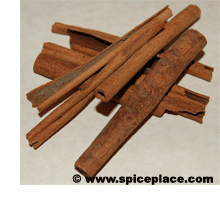 Cinnamon, perhaps one of the most popular and tastiest of spices (although many don’t think of it as a spice), is a substance which many enjoy on a daily basic but do not know much about. Despite its wide use throughout the world, especially in America, millions of people are not even aware of where it comes from.
Cinnamon, perhaps one of the most popular and tastiest of spices (although many don’t think of it as a spice), is a substance which many enjoy on a daily basic but do not know much about. Despite its wide use throughout the world, especially in America, millions of people are not even aware of where it comes from.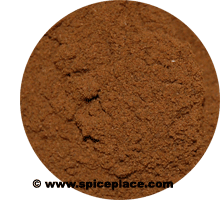 Cinnamon can basically be put in any food. It is put in pancakes, eggs, cakes, chocolate, candy, and is even used to add extra flavor to fruits (apples, cherries, pears), and cereal. In the Middle East, it is put in other foods that many Americans wouldn’t think about adding cinnamon too, such as lamb. Besides being used heavily as a spice to make tasty foods even tastier, and add flavor to bland foods, it also has some medical uses. It can treat colds, and people used to believe it was a straight up cure for it. Cinnamon is also used to treat a variety of digestive problems, such as upset stomachs and diarrhea. Cinnamon is high in antioxidants, which are important in reducing damage that cells endure regularly. Many commercials promote the fact that their product is high in antioxidants, and cinnamon is no different. The oil that cinnamon has is antimicrobial, which kills or slows the growth of bacteria, viruses, and other things of the like. While this does little for the human body, when cinnamon is placed around other foods, it prolongs their life (how long before they come inedible). Studies have shown that cinnamon has great effects on people with Type II diabetes, but while the media portrayed the studies as showing that true cinnamon was beneficial, it was actually cassia that was used in the studies. Another fantastic use of cinnamon is its use as an insect repellant (kind of odd considering how good it smells). Many independent farmers do not like using insecticide because of its harmful side effects on humans, but cinnamon is a safe way to keep the bugs out and the crops safe.
Cinnamon can basically be put in any food. It is put in pancakes, eggs, cakes, chocolate, candy, and is even used to add extra flavor to fruits (apples, cherries, pears), and cereal. In the Middle East, it is put in other foods that many Americans wouldn’t think about adding cinnamon too, such as lamb. Besides being used heavily as a spice to make tasty foods even tastier, and add flavor to bland foods, it also has some medical uses. It can treat colds, and people used to believe it was a straight up cure for it. Cinnamon is also used to treat a variety of digestive problems, such as upset stomachs and diarrhea. Cinnamon is high in antioxidants, which are important in reducing damage that cells endure regularly. Many commercials promote the fact that their product is high in antioxidants, and cinnamon is no different. The oil that cinnamon has is antimicrobial, which kills or slows the growth of bacteria, viruses, and other things of the like. While this does little for the human body, when cinnamon is placed around other foods, it prolongs their life (how long before they come inedible). Studies have shown that cinnamon has great effects on people with Type II diabetes, but while the media portrayed the studies as showing that true cinnamon was beneficial, it was actually cassia that was used in the studies. Another fantastic use of cinnamon is its use as an insect repellant (kind of odd considering how good it smells). Many independent farmers do not like using insecticide because of its harmful side effects on humans, but cinnamon is a safe way to keep the bugs out and the crops safe. 